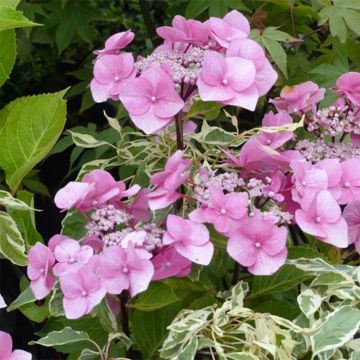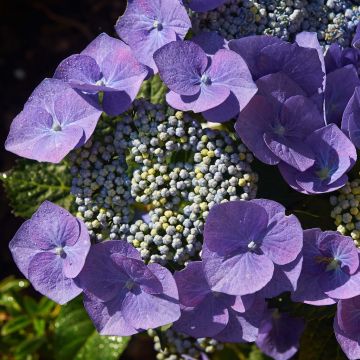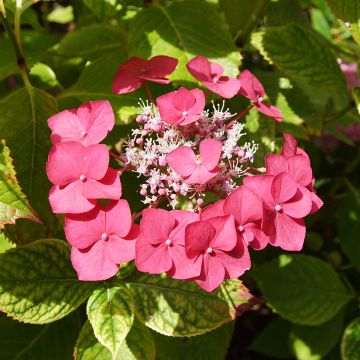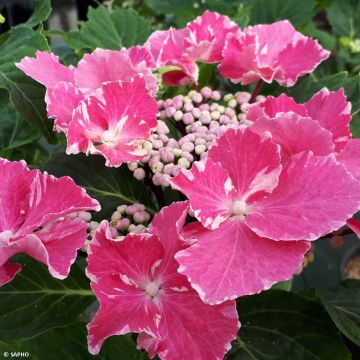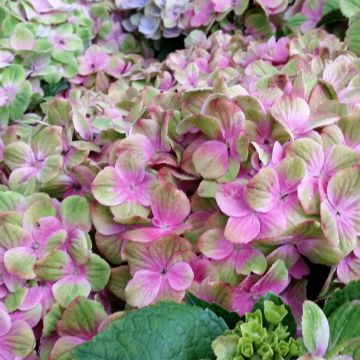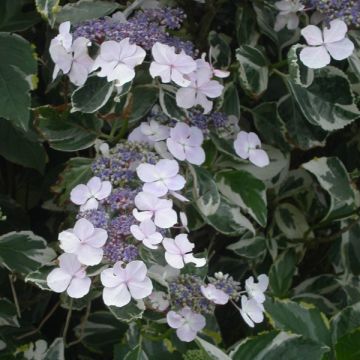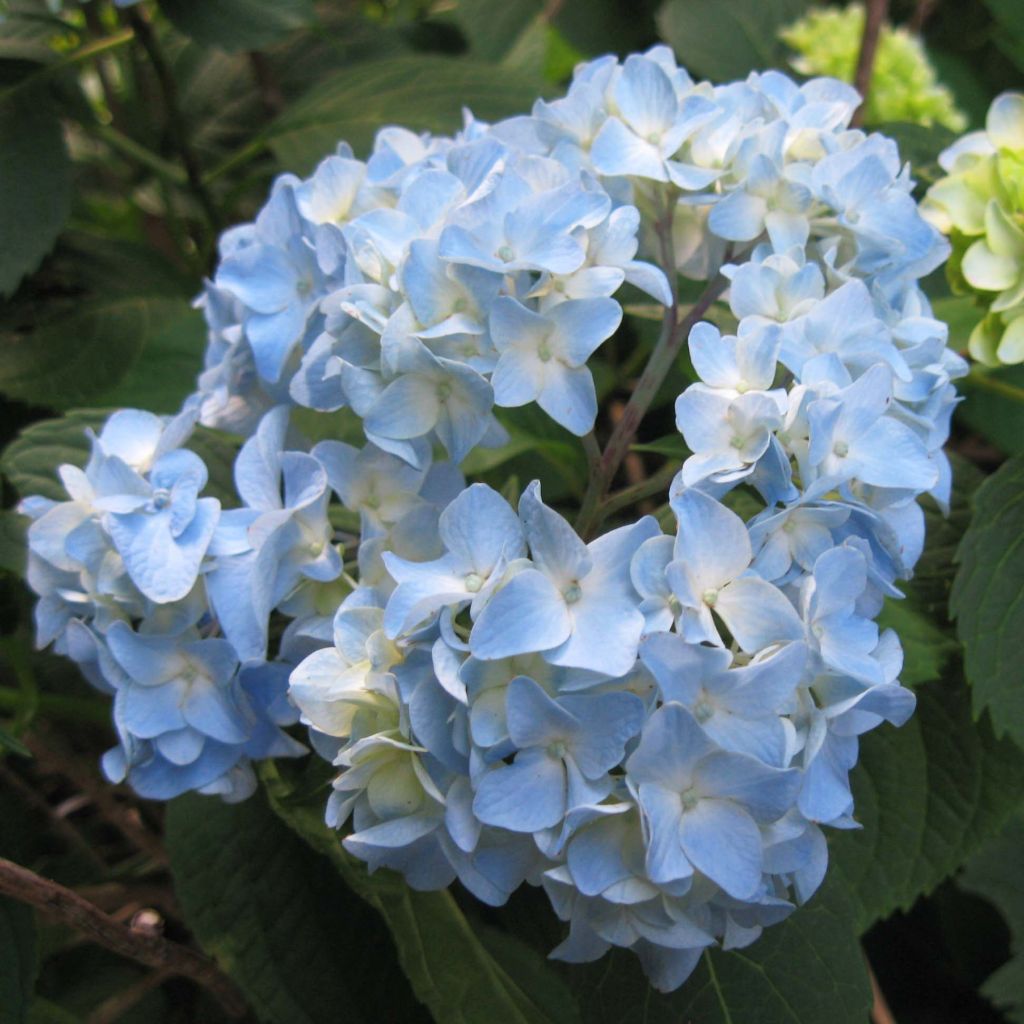

Hydrangea macrophylla Nikko Blue


Hydrangea macrophylla Nikko Blue
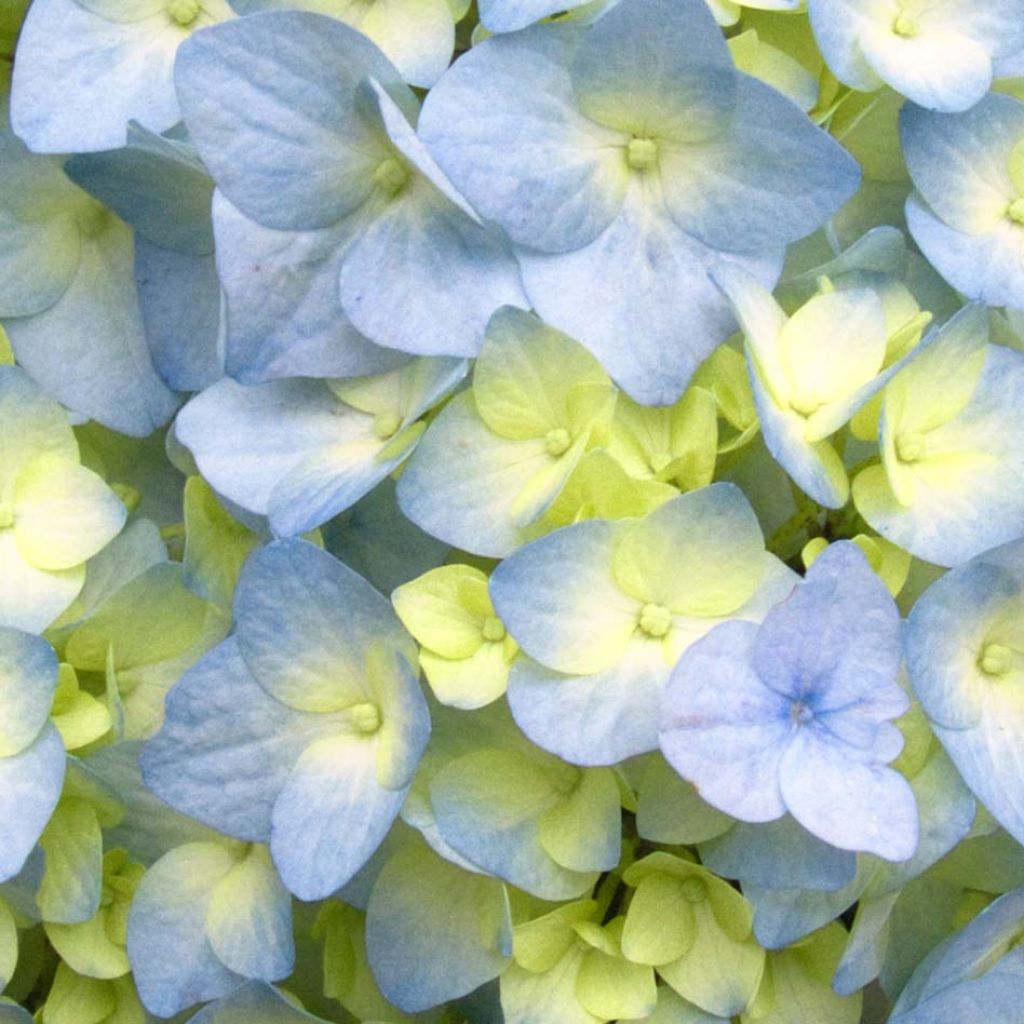

Hydrangea macrophylla Nikko Blue
Hydrangea macrophylla Nikko Blue
Hydrangea macrophylla Nikko Blue
Bigleaf Hydrangea, French Hydrangea, Lacecap Hydrangea
This item cannot be shipped to the selected country
Delivery charge from €5.90
Delivery charge from €5.90
Delivery charge from €5.90
More information
Schedule delivery date,
and select date in basket
This plant carries a 24 months recovery warranty
More information
We guarantee the quality of our plants for a full growing cycle, and will replace at our expense any plant that fails to recover under normal climatic and planting conditions.
From €5.90 for pickup delivery and €6.90 for home delivery
Express home delivery from €8.90.
From €5.90 for pickup delivery and €6.90 for home delivery
Express home delivery from €8.90.
From €5.90 for pickup delivery and €6.90 for home delivery
Express home delivery from €8.90.

Does this plant fit my garden?
Set up your Plantfit profile →
Description
The Nikko Blue Hydrangea macrophylla, originating from Nikko in Japan, is an incredibly floriferous and hardy hydrangea perfect for small gardens in cold regions. Its flower clusters bloom from early summer to October, and their colour depends on the soil's acidity. Acidic soil or soil rich in aluminium sulphate will produce a stunning azure blue hue, while neutral soil will result in a charming pastel pink. Though it may take some time to establish itself, this shrub will reward patient gardeners with 3 to 4 months of gorgeous flowers in a semi-shaded garden or terrace area.
The 'Nikko Blue' hydrangea belongs to the Hydrangeae family and is derived from a species of Hydrangea macrophylla native to China and Japan. At maturity, this bushy and well-branched shrub spreads to approximately 1.20 m (3 ft 11 in) in height and 1.50 m (4 ft 11 in) in width. During the summer months, from June to October, its small sterile flowers with 4 petals are clustered on dense, slightly flattened spherical flower heads, which are about 15 cm (5.9 in) in diameter. These flower heads can range from blue to pink and will be light or intense blue if the shrub is grown in acidic soil or soil rich in aluminium sulphate. The flowers are carried by flexible and slender stems aged one year or more. The shrub features beautiful dark green foliage, which is somewhat rounded and takes on yellow or red hues in autumn before falling off. The foliage is opposite on the branches and reaches about ten centimetres in length. The leaves are simple, ovate, ending in a pointed tip and are strongly toothed like a saw. Hydrangeas have a lifespan of at least 50 years.
The 'Hydrangea Nikko Blue' is a versatile plant that can be grown in gardens of all sizes. It can also be used as a beautiful shrub on terraces or balconies. Macrophylla hydrangeas are an essential choice for semi-shaded areas of your garden. Nikko Blue will complement a white hydrangea such as Madame Mouilère, Libelle, or even Great Star Blanc Bleu. While hydrangeas dislike limestone, they are not exclusively suited for heather soil. However, the colour of their flower heads is often influenced by the nature of the soil. Co-planting with magellanica fuchsias, Pieris, Sarcococca, annual impatiens, or spring-flowering bulbs and lilies creates a striking display. You can enjoy their stunning blooms in the garden or bring them inside to place in a vase.
Please note that the colour of the flowers on macrophylla hydrangeas depends on the soil pH level in which they are planted. Blue varieties of hydrangeas typically turn pink when planted in neutral or alkaline soil. If you want to maintain the blue colour of your hydrangeas, add ericaceous soil or sphagnum moss to your garden soil and add aluminium sulphate (slate contains aluminium sulphate) or alum stone every spring.
Report an error about the product description
Hydrangea macrophylla Nikko Blue in pictures
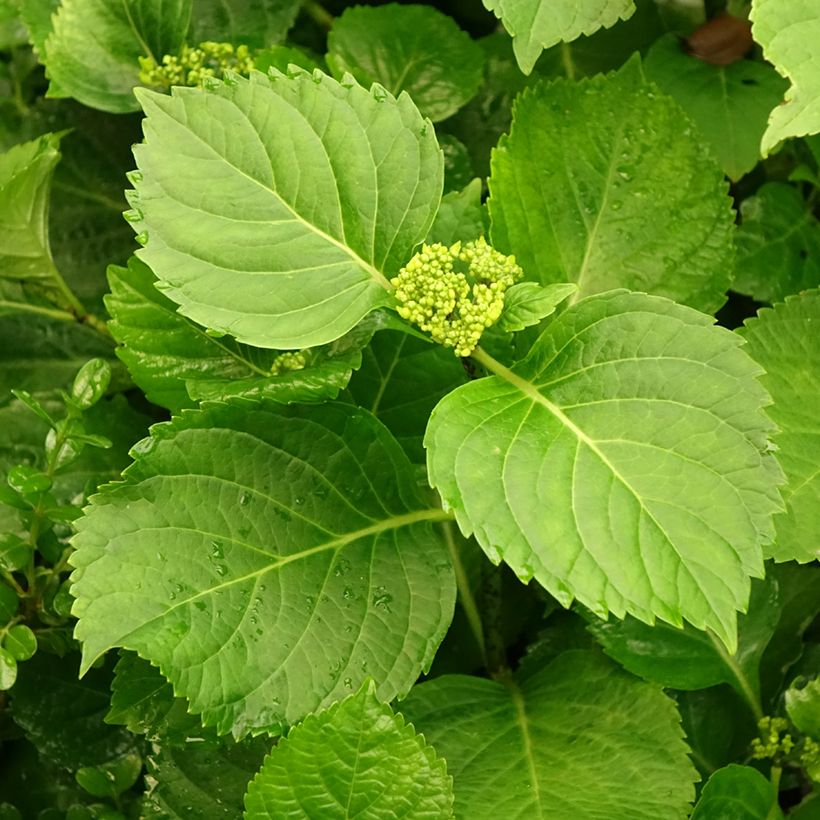

Plant habit
Flowering
Foliage
Botanical data
Hydrangea
macrophylla
Nikko Blue
Hydrangeaceae
Bigleaf Hydrangea, French Hydrangea, Lacecap Hydrangea
Cultivar or hybrid
Other Hydrangea Macrophylla
Planting and care
Plant the hydrangea in a partially shaded area with neutral to acidic soil for optimal growth. If your soil is not acidic, mix 50% ericaceous compost with your garden soil before planting. Ensure the soil is worked deeply before planting. A good base fertiliser like blood, fish and bone will give the plant nutrients without causing the roots to burn. If your soil tends to be dry, create a surface watering basin. Do not cut the dry umbels in late summer, as they protect the terminal shoots of the branches during winter. Instead, cut all the dry flowers in late February or during the first few days of spring.
Planting period
Intended location
Care
-
, onOrder confirmed
Reply from on Promesse de fleurs
Hedge shrubs
Haven't found what you were looking for?
Hardiness is the lowest winter temperature a plant can endure without suffering serious damage or even dying. However, hardiness is affected by location (a sheltered area, such as a patio), protection (winter cover) and soil type (hardiness is improved by well-drained soil).

Photo Sharing Terms & Conditions
In order to encourage gardeners to interact and share their experiences, Promesse de fleurs offers various media enabling content to be uploaded onto its Site - in particular via the ‘Photo sharing’ module.
The User agrees to refrain from:
- Posting any content that is illegal, prejudicial, insulting, racist, inciteful to hatred, revisionist, contrary to public decency, that infringes on privacy or on the privacy rights of third parties, in particular the publicity rights of persons and goods, intellectual property rights, or the right to privacy.
- Submitting content on behalf of a third party;
- Impersonate the identity of a third party and/or publish any personal information about a third party;
In general, the User undertakes to refrain from any unethical behaviour.
All Content (in particular text, comments, files, images, photos, videos, creative works, etc.), which may be subject to property or intellectual property rights, image or other private rights, shall remain the property of the User, subject to the limited rights granted by the terms of the licence granted by Promesse de fleurs as stated below. Users are at liberty to publish or not to publish such Content on the Site, notably via the ‘Photo Sharing’ facility, and accept that this Content shall be made public and freely accessible, notably on the Internet.
Users further acknowledge, undertake to have ,and guarantee that they hold all necessary rights and permissions to publish such material on the Site, in particular with regard to the legislation in force pertaining to any privacy, property, intellectual property, image, or contractual rights, or rights of any other nature. By publishing such Content on the Site, Users acknowledge accepting full liability as publishers of the Content within the meaning of the law, and grant Promesse de fleurs, free of charge, an inclusive, worldwide licence for the said Content for the entire duration of its publication, including all reproduction, representation, up/downloading, displaying, performing, transmission, and storage rights.
Users also grant permission for their name to be linked to the Content and accept that this link may not always be made available.
By engaging in posting material, Users consent to their Content becoming automatically accessible on the Internet, in particular on other sites and/or blogs and/or web pages of the Promesse de fleurs site, including in particular social pages and the Promesse de fleurs catalogue.
Users may secure the removal of entrusted content free of charge by issuing a simple request via our contact form.
The flowering period indicated on our website applies to countries and regions located in USDA zone 8 (France, the United Kingdom, Ireland, the Netherlands, etc.)
It will vary according to where you live:
- In zones 9 to 10 (Italy, Spain, Greece, etc.), flowering will occur about 2 to 4 weeks earlier.
- In zones 6 to 7 (Germany, Poland, Slovenia, and lower mountainous regions), flowering will be delayed by 2 to 3 weeks.
- In zone 5 (Central Europe, Scandinavia), blooming will be delayed by 3 to 5 weeks.
In temperate climates, pruning of spring-flowering shrubs (forsythia, spireas, etc.) should be done just after flowering.
Pruning of summer-flowering shrubs (Indian Lilac, Perovskia, etc.) can be done in winter or spring.
In cold regions as well as with frost-sensitive plants, avoid pruning too early when severe frosts may still occur.
The planting period indicated on our website applies to countries and regions located in USDA zone 8 (France, United Kingdom, Ireland, Netherlands).
It will vary according to where you live:
- In Mediterranean zones (Marseille, Madrid, Milan, etc.), autumn and winter are the best planting periods.
- In continental zones (Strasbourg, Munich, Vienna, etc.), delay planting by 2 to 3 weeks in spring and bring it forward by 2 to 4 weeks in autumn.
- In mountainous regions (the Alps, Pyrenees, Carpathians, etc.), it is best to plant in late spring (May-June) or late summer (August-September).
The harvesting period indicated on our website applies to countries and regions in USDA zone 8 (France, England, Ireland, the Netherlands).
In colder areas (Scandinavia, Poland, Austria...) fruit and vegetable harvests are likely to be delayed by 3-4 weeks.
In warmer areas (Italy, Spain, Greece, etc.), harvesting will probably take place earlier, depending on weather conditions.
The sowing periods indicated on our website apply to countries and regions within USDA Zone 8 (France, UK, Ireland, Netherlands).
In colder areas (Scandinavia, Poland, Austria...), delay any outdoor sowing by 3-4 weeks, or sow under glass.
In warmer climes (Italy, Spain, Greece, etc.), bring outdoor sowing forward by a few weeks.




































